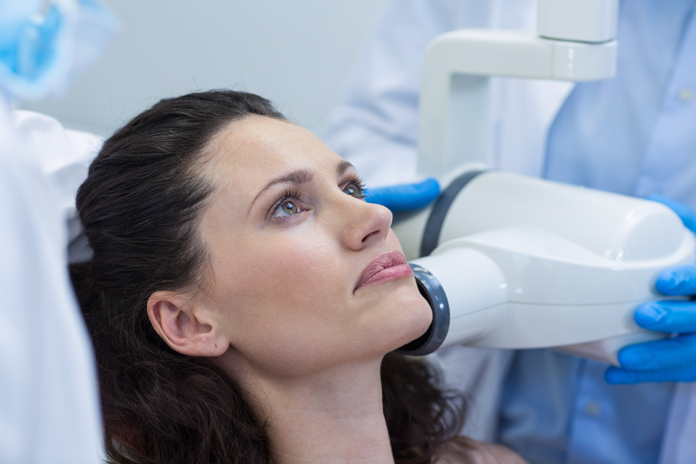In just 1 session in the chair you can improve your smile. Come brighten your pearly whites with us!
Before we get to the good stuff, let’s just quickly touch on the subject as to why your dental professional needs X-rays in the first place. If your clinician says it’s time for bitewing X-rays, what they mean is it is time for X-rays which evaluate the bone levels around your teeth, which can become destroyed if you have gum disease, and detect cavities between the teeth; all of which cannot be seen with the naked eye. It’s better to catch gum disease or a cavity in the early stages before they progress to a point where a simple filling or a regular dental cleaning won’t suffice.
Occasionally, your dental professional may suggest taking a periapical X-ray, commonly referred to as a PA. These X-rays are single images of a tooth’s entirety – all the way from the tip of the root to the top of the tooth you see. These are unlike bitewing radiographs, which cannot see to the tip of a tooth’s root. PAs help diagnose any root anomalies such as abscesses, cysts, and tumors. If you have a toothache, a PA must be taken to help determine the cause.
Every 3-5 years, your dentist will need a full-mouth series, or FMX, which is a combination of PAs (entire X-rays of each tooth) and bitewings. It’s important for your dental professional to have a comprehensive picture of all your teeth because gum disease and cavities don’t often cause pain in the beginning stages, which is why detecting them with X-rays is imperative. Prevention, and catching any issues early, is cheaper than restoration (i.e., fillings, root canals, crowns).
Lastly, your dentist might need a panoramic X-ray every 3-5 years. This radiograph shows the entire mouth, and surrounding structures in one image, including nasal structures, sinuses and temporomandibular joints (TMJ: joint that opens and closes your jaw). This is the X-ray professionals commonly use to evaluate wisdom teeth. Beyond evaluating wisdom teeth, a panoramic X-ray captures impacted teeth, cysts, fractures, infections, and tumors. A pano can even spot a clogged carotid artery, before you may experience symptoms of an impending heart attack, which is a lifesaving find.
- The dosage of a whole body CT scan is a whopping 10.0 mSv!
- A mammogram packs a dosage of 0.42 mSv.
- The average radiation in the U.S. from natural sources on an annual basis comes in at a dosage of 3.0 mSv.
- A chest X-ray has a dosage of 0.10 mSv.
- Radon in the average U.S. home on an annual basis is a dosage of 2.28 mSv.
- The annual dose received by food and water (potassium) is a dosage of 0.4 mSv.
- A cross-country flight from New York to Los Angeles comes with a dosage of 0.04 mSv.
- Living in a brick/stone/concrete house (annual) has a dosage of 0.007 mSv.
- Smoking one pack of cigarettes brings with it a dosage of 0.0049 mSv.
- Eating a banana will give you a dosage of 0.0001 mSv.








